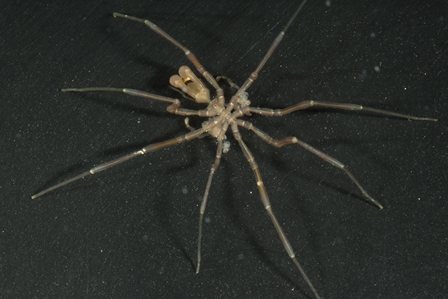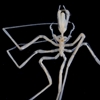Other Names
- Sea spider
General Description
Body with proboscis projecting outward from front, with the mouth at the tip. Central body (trunk) behind the proboscis, with a raised, rounded area (tubercle) bearing four eyes. Eight segmented walking legs attached to the sides of the trunk. Short abdomen behind trunk, unsegmented. Leg span about 4 cm.
Biology
Males brood the young which are found gathered on the body of the adult. This species is thought to breed in warmer months, with records of egg-bearing males present from December to April. Males carry the eggs, holding them between body parts called ovigers that hang under the animal.
Habitat
Usually under boulders and reef or on hydroids and seaweed in subtidal areas, sometimes in intertidal areas.
Reefs
Coastal shores
Distribution guide
South-eastern Australia, including western and central Victoria.
Species Group
Depth
Shore (0-1 m)
Shallow (1-30 m)
Water Column
Max Size
4 cm
Commercial Species
No
Global Dispersal
Native to Australia
Conservation Status
- DSE Advisory List : Not listed
- EPBC Act 1999 : Not listed
- IUCN Red List : Not listed







